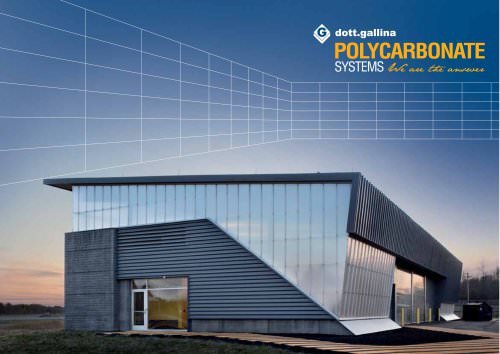If you’re planning to add or cover an outdoor living space, chances are you’ve asked: “Do I need council approval for my pergola or roofed outdoor area?” And if you’re considering a roof made from polycarbonate (for example a clear glass like polycarbonate pergola roof from ExcelitePlas), the answer becomes even more important — because once you add a solid roof (like polycarbonate roofing sheets) the structure often falls into a different regulatory category.

In this guide we’ll walk you through:
-
What defines a pergola, a verandah, and a patio, and why the difference matters for approvals.
-
Key national/common-rules you should know.
-
A state-by-state summary of when approvals are required (or when your build may be exempt).
-
How the choice of materials — like using polycarbonate roofing sheets or panels from ExcelitePlas — may affect your approvals.
-
Practical next steps and tips to avoid costly mistakes.
Pergola vs Verandah vs Patio — what’s the difference?
The terminology matters because building and planning authorities often apply different rules depending on which category your outdoor structure falls into.
Pergola: A typically open-roof outdoor structure, often freestanding or attached, with beams, open lattice or some covering designed for shade rather than full weather-proofing. When it remains unroofed or use of permeable shade-cloth, many states treat it as minor (exempt) development.

Verandah (or veranda/vernandah): An attached roofed structure, typically along the side or front of a house, often with a fixed solid roof, more integrated into the house’s footprint. Because it’s roofed and attached, it often triggers stricter approvals.

Patio: Usually a paved, ground-level outdoor area; when roofed it may be classed like a verandah. When unroofed it may be exempt.

Why does this matter? Because many states and councils say: if your pergola is “unroofed” or uses a very light covering, it may be exempt. But when you add a solid roof (for example sheets or panels of polycarbonate roofing) it may become a roofed structure requiring approval. For example in WA, a pergola with a “solid covering” is likely re-classified as a patio/verandah and so needs full permit.
Also: Using materials like polycarbonate roofing sheets (solid panels) rather than shade cloth pushes the structure into a “roofed” category where the building code, structural compliance and council oversight apply.
National/Common rules you should know
Across Australia you’ll find recurring themes in what triggers council or building approval:
-
Set-backs from boundaries (neighbour walls, property boundaries).
-
The zoning, heritage overlays, bushfire / cyclone area status — some areas automatically require extra approvals.
-
Whether the structure complies with the local building code (eg. structural integrity, materials, connection to the main building). Even if exempt from planning, building requirements may still apply.
If you install a pergola roof using quality materials (for example polycarbonate roofing or multiwall polycarbonate sheets from ExcelitePlas) you must remember: the better your materials the fewer issues you’ll face on durability — but the council may still treat the roof as a “permanent roofed structure”.
State-by-State Summary (Australia)
Below is a simplified summary of rules per state. Always check your local council for exact rules.
| State / Territory | Typical Exempt Conditions | When Approval likely required |
|---|---|---|
| NSW | For balconies, decks, patios, pergolas, verandahs – the “Rules for exempt development” state: e.g., behind building line, < 25 m² area (for small lots), height/ setback limits. | If you exceed area/height, add a solid roof (e.g., polycarbonate sheets), are too close to boundary, or attach heavily to house. |
| Victoria (VIC) | Small pergolas may be exempt if size under certain limit (eg <20 m²) and not attached or roof sealed. | Using solid roofing material (for example a pergola roof with polycarbonate roofing sheets), large area, being attached to house or altering footprint. |
| Queensland (QLD) | Often similar: exempt when small, freestanding, open or translucent covering. Check local council. | If you use a full solid roof, attach to house, or in specific zoning/heritage. |
| Western Australia (WA) | Exempt if under area threshold, unroofed or shade cloth covering, height low, and not in bushfire/heritage zone. | If you add a solid roof (polycarbonate panels), breach height, boundary, or are in cyclone/bushfire area. |
| South Australia (SA) | Similar approach: small open structures often exempt; roofed additions often need permit. | When roofed, attached, large size, or boundary/heritage issues. |
| Tasmania, ACT, NT | They follow same principles: size, roof‐type, boundary, zoning. Always check local rules. | Same triggers as above. |
Practical Steps for You (Homeowner or Builder)
-
Define what you’re building: Is it freestanding or attached? Is the roof open (shade cloth) or solid (polycarbonate roofing panels)?
-
Check your local council or building permit authority early: Ask specifically “For this location, size X m², attached/detached, roof type solid polycarbonate — do I need planning approval and/or building permit?”
-
Select your materials: If you’re going with polycarbonate roofing (for example from ExcelitePlas), check for: UV protection, thickness, wind rating, cut-to-size support, warranty. Good materials help make the structure more compliant.
-
Design with the rules in mind: Keep the size under exempt thresholds if you want to avoid full approvals (if possible), ensure setbacks, height limits, drainage, attachments all meet the local standard.
-
Get drawings/engineering if required: For roofed, attached structures you may need structural engineer sign-off.
-
Keep documentation: Invoice for materials (e.g., ExcelitePlas polycarbonate sheets), drawings, council correspondence — this helps if future buyers or insurers ask.
-
Avoid building without checking: Non-compliant or unapproved structures can lead to fines, orders for removal, or insurance issues.
When You Can Avoid a Council or Building Permit — Even With Polycarbonate Roofing?
Even though adding a roof often triggers approval, some situations still qualify as “exempt development” or “minor works” under Australian planning codes. Here’s how you can legitimately avoid a building permit — while still doing things safely and compliantly.
✅ 1. Keep It Freestanding and Small
If your pergola is not attached to the house, sits well within your property boundaries, and stays under certain size limits (often 10–20 m²), many councils treat it as a minor structure.
Examples:
-
In NSW, you can build a freestanding pergola up to 25 m² (on larger lots) or 15 m² (on smaller lots), with a maximum height of 3 m, as long as it’s behind the building line and not enclosed.
-
In Victoria, the Victorian Building Authority says you may be exempt if the structure is <20 m², <3 m high, not attached, and not roof-sealed.
👉 Tip: Use lightweight polycarbonate roofing with gaps or natural ventilation (instead of a sealed roof with guttering) — it can still let light through but feel more “open,” helping you stay within the spirit of “pergola” exemptions.
✅ 2. Choose “Open-Style” or Partial Roof Designs
If you use spaced battens, perforated panels, or a mix of open beams and polycarbonate panels, some councils still treat it as an unroofed pergola with partial covering.
This is especially true if less than 50% of the area is covered, or if the covering allows rain and air to pass through.
✅ 3. Stay Clear of Boundaries and Easements
Even roofed structures can be exempt if they are well inside your property and away from neighbours.
If you maintain:
-
At least 900 mm to 1 m setback from the boundary, and
-
The roof does not drain onto neighbouring property,
you can often qualify for “exempt development” (check local DCP/LPS rules).
✅ 4. Use a Pre-Engineered, Certified Kit
Many polycarbonate pergola systems (like Excelite’s prefabricated pergola kits) come engineered to meet Australian Standards.
If the kit has:
-
Pre-approved structural certification (AS/NZS 1170 load rating), and
-
Is within the size/height limits,
some councils let you install it without submitting additional engineering drawings.
📘 Example: A freestanding 3 × 3 m pergola kit with clear polycarbonate roofing, installed in a backyard and under height limits, might be exempt in VIC or NSW — especially if it’s a pre-certified kit.
✅ 5. Check for Local “Fast-Track” or “Exempt” Codes
Every state has its own exempt development code or fast-track approval path:
| State | Possible Exemption Reference | Quick Notes |
|---|---|---|
| NSW | Exempt Development Code – SEPP | Pergolas and awnings under 25 m², 3 m high, not attached, not enclosing walls. |
| VIC | Victorian Building Authority Guide | Small, detached, unroofed or semi-open pergolas may be exempt. |
| QLD | Queensland Building & Construction Commission | Minor freestanding roofed structures may be self-assessable under local codes. |
| WA | Department of Mines, Industry Regulation & Safety | Small shade structures using lightweight materials may not need full permit. |
| SA | PlanSA – Exempt Building Work | Pergolas <20 m² and <3 m high, open style, behind front wall, may be exempt. |
Summary
If you’re simply adding a small, freestanding pergola with an open roof or shade cloth, you may be exempt from council approval — depending on your state and size. But if you’re covering it with a solid roof material (especially polycarbonate roofing panels), attaching to the house, or exceeding size/height limits, you’ll very likely need council planning and/or building approval.
Selecting high-quality materials like polycarbonate sheets and roofing systems from ExcelitePlas helps you with durability and compliance, but doesn’t bypass the regulatory side. Always check with your local council, shape your design accordingly, and keep documentation.
With the right preparation, you’ll enjoy your new outdoor living space — with the right roof, the right structure and the right approvals in place.


